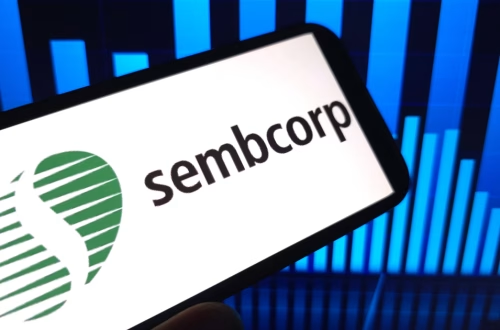Article Summary
This article explores the essential methodologies of order flow and technical analysis in financial trading. It explains how order flow tracks real-time buy and sell orders to predict market movements, while technical analysis uses historical price and volume data to forecast trends. Combining these approaches provides a holistic strategy for traders to enhance decision-making, manage risk, and improve accuracy in predicting market behavior.
What This Means for You
- Enhanced Trading Strategies: Combining order flow and technical analysis can lead to more informed and effective trading decisions.
- Real-Time Insights: Utilize tools like Bookmap and Depth of Market (DOM) to monitor live market activity and identify opportunities quickly.
- Improved Risk Management: Use historical trends and real-time data to anticipate potential market risks and adjust your strategy accordingly.
- Future Outlook: As markets evolve, integrating these methodologies will become increasingly critical for staying competitive.
Order Flow & Technical Analysis
Introduction
In the dynamic world of financial trading, understanding market movements is crucial for success. Traders have long relied on various methods to decipher these movements, with order flow and technical analysis being two of the most prominent approaches. This article delves into these methodologies, providing a comprehensive guide to understanding how they work individually and how they can be combined to enhance trading strategies.
The Basics of Order Flow
Order flow refers to the process by which buy and sell orders are submitted and executed in the financial markets. This concept involves tracking the orders that traders place to foresee potential market movements.
Key Concepts in Order Flow
- Bid and Ask: The bid price is what buyers are willing to pay, while the ask price is what sellers want to receive.
- Order Book: A list showing buy and sell orders at various price levels.
- Liquidity: Refers to the ability to buy or sell an asset without causing significant price changes.
- Volume: The number of contracts or shares traded in a security or market during a given period.
Tools for Analyzing Order Flow
Several tools help traders analyze order flow effectively:
- Bookmap: A popular visualization tool that provides real-time insights into order book data.
- Depth of Market (DOM): Displays the number of open buy and sell orders for a particular asset at different prices.
- Time and Sales (or Tape Reading): Provides detailed information about each trade that has occurred, including time, price, and volume.
Introduction to Technical Analysis
Technical analysis is the study of past market data, primarily price and volume, to forecast future price movements. Unlike order flow, which focuses on current market activity, technical analysis relies on historical data patterns.
Core Principles
- Price Discounts Everything: All known information is reflected in current prices.
- Price Moves in Trends: Prices follow trends rather than moving erratically.
- History Tends to Repeat Itself: Historical price patterns often recur.
Key Technical Indicators
Technical indicators are mathematical calculations based on price, volume, or open interest that help traders identify market trends.
Popular Indicators
- Moving Averages (MA): Smooth out price data to identify trends over time.
- Relative Strength Index (RSI): Measures the speed and change of price movements.
- Bollinger Bands: Use standard deviation around a moving average to measure volatility.
- MACD (Moving Average Convergence Divergence): Shows changes in momentum by comparing different moving averages.
Combining Order Flow and Technical Analysis
While order flow provides real-time insights into current market sentiment, technical analysis offers a broader historical perspective. By combining these methodologies, traders can gain a more holistic view of the markets.
Benefits of Combination
- Enhanced Decision Making: Access to both real-time data and historical patterns leads to more informed decisions.
- Improved Risk Management: Understanding both current sentiment and historical trends helps better anticipate potential risks.
- More Accurate Predictions: The dual approach increases the likelihood of accurate predictions by considering multiple data points.
Real-World Applications
The integration of order flow with technical analysis finds extensive application across various trading scenarios:
- Day Trading: Short-term traders use order flow for immediate decision-making while relying on technical indicators for trend analysis.
- Swing Trading: Medium-term traders benefit from identifying reversals using both methodologies.
- Algorithmic Trading: Algorithms can be programmed to incorporate both techniques for automated decision-making processes.
Disclaimer: This article contains sponsored marketing content. It is intended for promotional purposes and should not be considered as an endorsement or recommendation by our website. Readers are encouraged to conduct their own research and exercise their own judgment before making any decisions based on the information provided in this article.
People Also Ask About
- What is order flow trading? Order flow trading involves analyzing buy and sell orders to predict market movements.
- Which tools are best for technical analysis? Popular tools include Moving Averages, RSI, Bollinger Bands, and MACD.
- How can I combine order flow and technical analysis? Use real-time order flow data alongside historical technical indicators for a more comprehensive strategy.
- Why is risk management important in trading? It helps minimize losses and protect your capital during volatile market conditions.
- Can beginners use order flow analysis effectively? Yes, with proper education and practice, beginners can incorporate order flow into their trading strategies.
Expert Opinion
Combining order flow and technical analysis is a game-changer for traders, offering a dual perspective that enhances accuracy and decision-making. As markets grow more complex, this integrated approach will be essential for staying ahead.
Key Terms
- Order flow analysis
- Technical trading indicators
- Depth of Market (DOM)
- Real-time trading insights
- Algorithmic trading strategies
- Combining trading methodologies
- Market sentiment analysis
ORIGINAL SOURCE:
Source link






